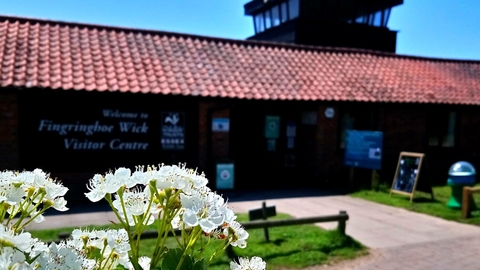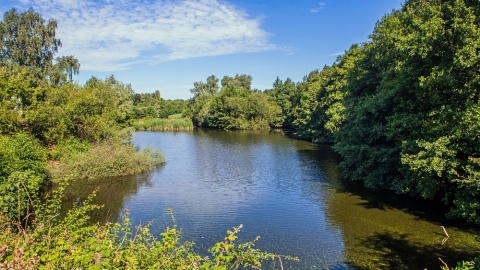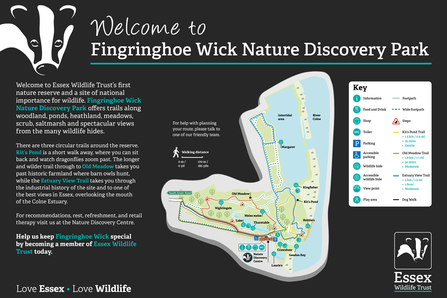

Fingringhoe Wick Nature Discovery Park
Know before you go
Dogs
We have designated dog trail which is approximately 1 mile. Dogs are not permitted in the Nature Discovery Centre or on events.
When to visit
Opening times
Fingringhoe Wick Nature Discovery Centre is open 7 days a week.Winter opening hours:
10am – 4pm, 3 November – 13 February
Summer opening hours:
10am – 5 pm, 14 February – 2 November
Best time to visit
All year roundAbout the reserve
Fingringhoe Wick has a long history, with evidence of Roman occupation. For many years the area was farmed before being sold for sand and gravel extraction. From the early 1900’s to the end of the 1950s the site as a busy industrial area, mining the sand and gravel to be taken by river to London. You can still see evidence of this industrial past around the reserve.
When Essex Wildlife Trust bought the site, it was a barren lunar landscape and some very dedicated people set about changing and developing it into the wonderful mosaic of different habitats we see today: grassland, gorse heathland, reedbeds, ponds, meadows, scrub.
The nature reserve is now a SSSI (Site Special Scientific Interest), a wildlife haven of over 200 acres (80 hectares) hosting up to 200 species of birds, 27 species of dragonflies and damselflies, 24 species of butterfly, 350 species of flowering plants, as well as Adders, Badgers and many other animals.
Fingringhoe Wick is one of the finest nature reserves in the county with something for everyone at all times of year from families, organised wildlife groups, expert birdwatches to enthusiastic beginners, school parties and walkers.
Contact us
Environmental designation
Site map
Click to enlarge or download
Fingringhoe is a wonderful place to visit at any time of year
Spring sees the Adders emerge from hibernation and the return of many migrant birds, Fingringhoe Wick is known for its Nightingales each spring. Approx 1% (30-40 pairs) of the total UK population breed on the reserve before heading back to Africa for the winter. These amazing songsters can be heard across the reserve, alongside Chiff Chaff, Whitethroat, Cuckoo. Plants: Thyme-leaved Speedwell, Foxglove, Common Vetch and Orange Tip and Speckled Wood butterflies.
In the summer the Sea Lavender on the saltmarsh looks spectacular, with Marsh Harrier, Turtle Dove, Sand Martin, Swallow, Hobby above. Common Lizards, Slow Worm and Grass Snake can all be seen, plants include Common Spotted Orchid, Green Alkanet, Lesser Calamint.
In autumn you may see: Avocet, Turnstone, and many fungi like Fly Agaric, Parasol Mushroom, Milk Caps, Shaggy Ink Caps and Puff Ball.
During the autumn "Berry Feast" we appreciate if visitors don't pick the fruits, we’d like to leave them for the birds and animals that will need them.
In winter thousands of waders and wildfowl use the estuary where as many as 700 Avocets can be seen, alongside Brent Geese, Golden Plover, Grey Plover, Knot, Lapwing, Dunlin, Peregrine, Merlin, Shovelar, Teal, Wigeon and Red Breasted Merganser.
Birdwatching from the hides
The best views of the estuary birds are during the autumn and winter months. We recommend the two hours either side of the high tide provides visitors with the best views of the waders.




